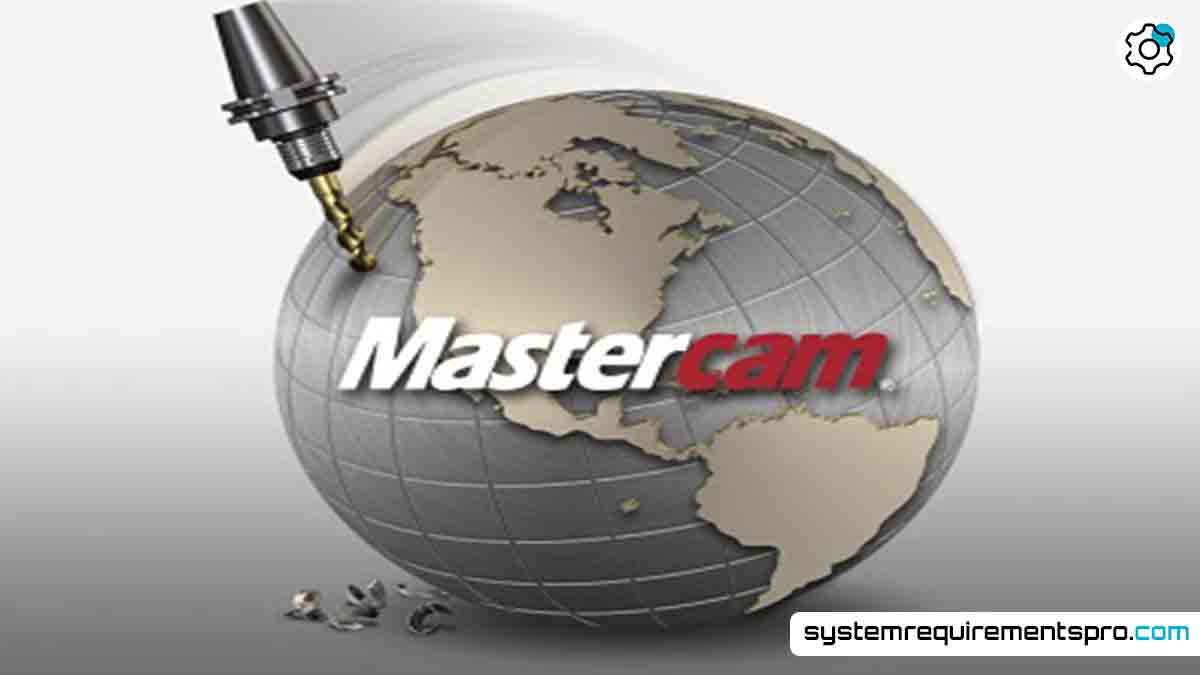Efficiency rules in the realm of CNC machining and CAD/CAM tools. The performance of your program can either make or break your output, whether you are creating toolpaths for intricate geometries or designing detailed parts. Here, knowing the Mastercam system requirements becomes vital. Mastercam depends on the hardware of your computer to provide flawless, lag-free running, much as a high-performance engine needs the correct fuel. Whether you are configuring a new workstation or maximizing an old one, let us explore the requirements you will need to run Mastercam efficiently.
Mastercam Minimum System Requirements
Make sure your system satisfies the baseline hardware and software requirements before adding Mastercam. Although they may restrict your capacity to manage more complex projects or advanced processes, these minimum requirements guarantee the software can launch and complete simple tasks.
Minimum Requirements
- Operating System: Windows 10 or 11 (64-bit).
- Processor: A multi-core CPU with at least 3.0 GHz clock speed (Intel i5 or AMD Ryzen 5 equivalent).
- RAM: 8 GB of memory.
- Graphics Card: A dedicated GPU with 2 GB VRAM (NVIDIA Quadro or AMD Radeon Pro recommended).
- Storage: 20 GB of free space on an HDD.
- Display: 1920×1080 resolution with True Color support.
Although these specs let Mastercam run, users may find slower rendering times, especially with complicated 3D models or high-resolution toolpaths. For enthusiasts or those working on smaller projects, this arrangement might be sufficient. Professionals should, however, strive for better standards to help prevent congestion.
Mastercam Recommended System Requirements
The recommended system requirements offer a more future-proof configuration to enable Mastercam to reach its full potential, which includes faster simulations, smoother multitasking, and effective handling of large assemblies. These specs fit rigorous settings, including the manufacturing of aerospace, automotive, or medical devices.
Recommended Requirements
- Operating System: Windows 11 (64-bit) with the latest updates.
- Processor: A high-end multi-core CPU (Intel i7/i9 or AMD Ryzen 7/9) with a base clock of 4.0 GHz or higher.
- RAM: 32 GB or more for handling large files and multitasking.
- Graphics Card: A professional-grade GPU with 8 GB VRAM (NVIDIA RTX A-series or AMD Radeon RX 6000 series).
- Storage: 40 GB of free space on an NVMe SSD for faster data access.
- Display: 3840×2160 (4K) resolution with 100% sRGB color accuracy.
Purchasing these parts guarantees faster file saves, lower lag during simulations, and better performance. Professionals using complex surface designs or multi-axis machining will especially gain from the upgraded GPU and SSD.
Mastercam System Requirements PC: Minimum vs Recommended
Your budget and workload will determine whether you choose minimum or recommended specifications. Here is a brief comparison to assist in your decision:
| Category | Minimum Requirements | Recommended Requirements |
|---|---|---|
| Operating System Requirements | Windows 10/11 (64-bit) | Windows 11 (64-bit) |
| Processor Requirements | Intel i5 / AMD Ryzen 5 | Intel i7/i9 / AMD Ryzen 7/9 |
| RAM Requirements | 8 GB | 32 GB+ |
| Graphics Card Requirements | 2 GB VRAM | 8 GB VRAM |
| Storage Requirements | 20 GB HDD | 40 GB NVMe SSD |
| Display Requirements | 1920×1080 | 3840×2160 (4K) |
The recommended configuration future-proofs your investment, especially as Mastercam releases more resource-intensive updates, while the minimum setup keeps costs low. The latter lowers downtime and increases return on investment for companies by means of increased output.
Optimization Tips for Mastercam Software
Even with great hardware, fine-tuning can make Mastercam even better. Try these:
- Update Drivers: Make sure your GPU and chipset drivers are current to avoid compatibility issues.
- Use SSD Storage: Use an SSD for installation and active project files to speed up loading.
- Close Background Apps: Free up RAM by closing unnecessary programs like web browsers or video streams.
- Adjust Graphics Settings: Turn down anti-aliasing or shading in Mastercam’s display options if you’re lagging.
- Keep Your System Healthy: Clean temp files and defragment HDDs (if you use them).
For teams working on big projects, a networked storage solution with fast access can also help the workflow.
Conclusion
Knowing Mastercam system requirements is about matching your hardware with your operational objectives, not only about fulfilling boxes. The recommended configuration enables you to confidently take on difficult projects, while the minimum specs keep the software running. Investing in a strong CPU, lots of RAM, and a professional-grade GPU will help you reduce downtime and maximize performance. Recall that improving your system is never a one-time event; consistent maintenance and upgrades help you keep ahead in the hectic fields of manufacturing and design.
Frequently Asked Questions
Can I run Mastercam on a laptop?
Yes, if the laptop meets the minimum requirements. But for sustained performance, go for a workstation-grade laptop with a dedicated GPU and cooling system.
What if my PC doesn’t meet the minimum requirements?
The software will crash, lag, or not install. Complex operations like simulation or rendering will be unusable.
Is upgrading RAM or GPU more important for Mastercam?
Both are important, but RAM is for multitasking, and a better GPU is for graphics. Prioritize based on your workflow (e.g,. 3D modeling vs 2D toolpaths).
Does Mastercam support virtualization or cloud setups?
Mastercam is optimized for local installations. Virtualized environments will have latency issues, but cloud workstations with high-end specs can work.
How often does Mastercam update its system requirements?
Requirements change with major annual releases. Always check the latest specs before upgrading your software.
We hope that you have found the answer to the system requirements for Mastercam. Follow System Requirements Pro for more such updates, and bookmark this page to get the latest updates on the system requirements for Mastercam.

